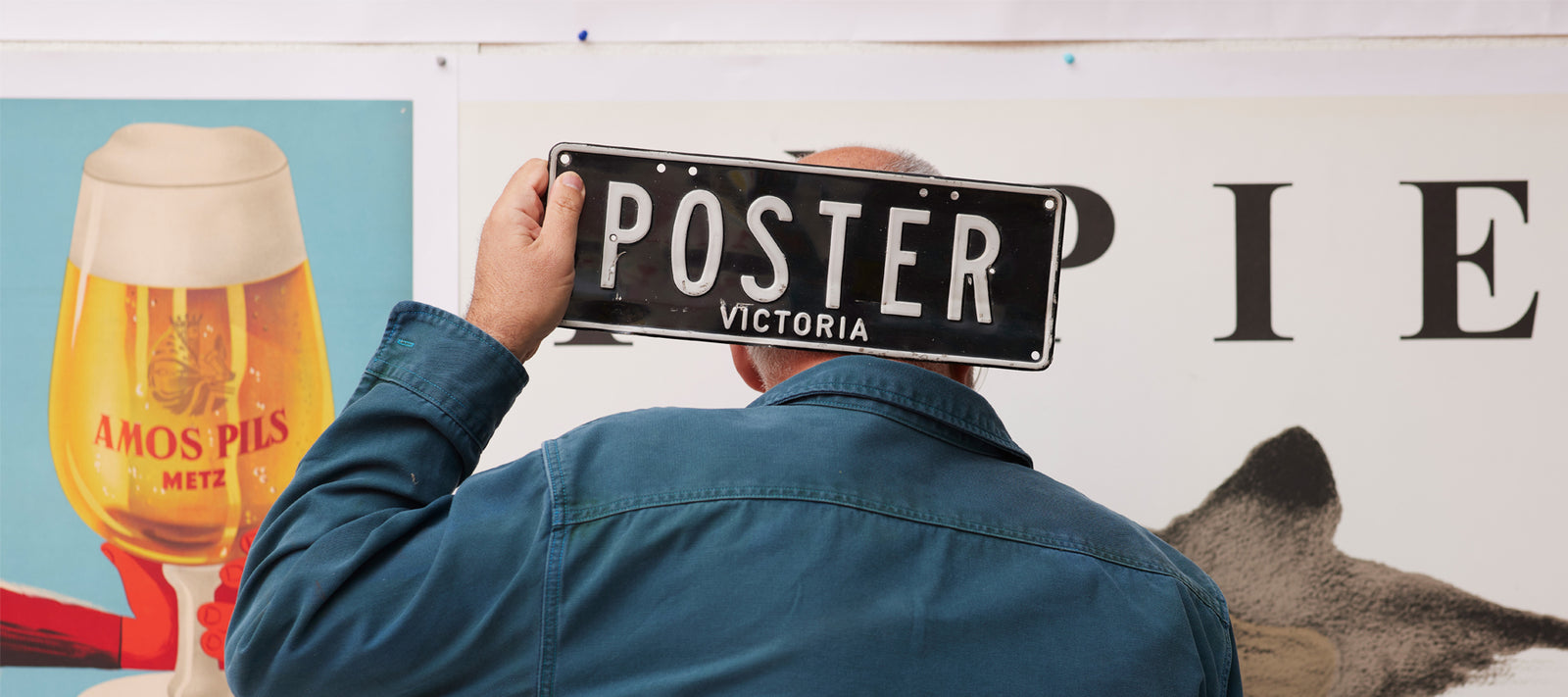Based in Melbourne Australia, Vintage Posters is owned by Sam Johnson aka the Poster King. Sam has been specialising in original vintage posters since the early 90’s.
At Vintage Posters we showcase only the best of 20th Century graphic designs. As one of the primary sources of information of their time, posters bare great sentimental value and transport us back in time. Our extensive collection includes original advertising posters of goods and services, art nouveau, historic art exhibitions, travel and cinema.
All our posters are original lithographs sourced throughout Europe... the real deal! They are restored and mounted on Linen and Canson paper backing for conservation purposes. We also offer framing and complimentary delivery services within the Melbourne metro area.
The history of vintage posters...
Vintage posters are more than mere collectibles; they are a testament to bygone eras. Their increasing value is attributed to their age, making them sought-after pieces in the collector's world. Their scarcity further amplifies their appeal; imagine, only a limited number were printed for city wall advertisements, and even fewer survived to the present day. This scarcity makes these posters unique, coveted additions to collections, often disappearing into private archives. These posters are also recognised as a unique art form, with hardly any similar originals in existence.
Their uniqueness doesn't stop there; the printing techniques used add another dimension to their appeal. If the poster dates back to the pre-1940s era, it was likely crafted using lithography, a method that lent textures and colours unattainable by modern printing techniques. Hence, these posters are not just pieces of paper; they are tangible remnants of history, each one carrying a unique narrative.
What does ORIGINAL mean?
We only deal in original vintage posters – never reproductions!
In poster lingo, the term ‘original’ refers to a poster that’s an authentic, first-run copy from the time it was created, not a reproduction or modern print.
These first-run copies were often printed from maquettes – small-scale mockups, usually done by hand, that served as blueprints for the final design. Once the maquette was approved, the design was scaled up for full-size printing, typically using lithography. This method, the most common at the time, allowed for mass production of posters with vivid colours and sharp details.
To give you further peace of mind, every poster comes with a signed certificate of authenticity, and we stand by it with a full guarantee.
What exactly is a lithograph print?
Lithography involves drawing a design onto a flat surface, traditionally a stone or a metal plate, using materials that attract ink. The design is then transferred to paper using a press. This process typically allows for finer details and a wider range of colours compared to other printing methods.
When you run your hand lightly over an original lithograph, you may feel a slight 'waxy' texture or raised areas where the ink has been applied. This is due to the nature of the lithographic process, where the ink adheres to the drawn areas on the stone or plate.



